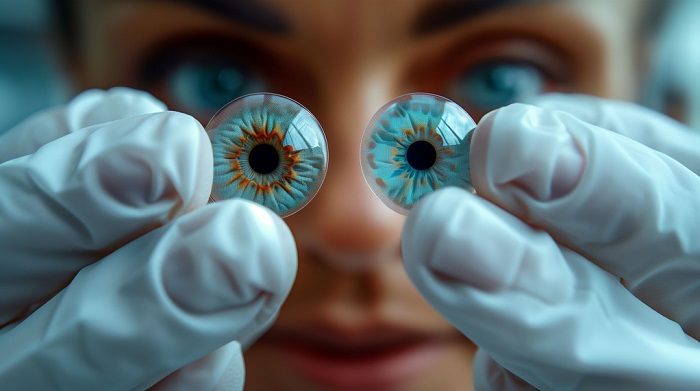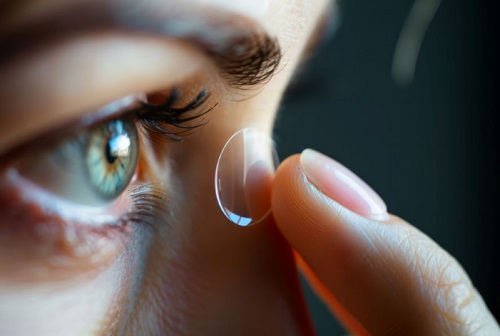Contact lenses offer a convenient and often liberating alternative to glasses, providing clear vision without the bulk of frames. However, whether transitioning from glasses or trying contact lenses for the first time, working with an optometrist ensures proper fitting and optimal eye health.
Read on to learn what to expect during a contact lens fitting with an optometrist.
Understanding the Purpose of a Contact Lens Fitting
Unlike glasses, contact lenses rest directly on the eye’s surface, making a precise fit essential for comfort and safety. A contact lens fitting assesses several factors, including eye shape, tear film quality, and prescription strength. The goal is to match the individual with lenses that correct vision effectively while maintaining eye health.
Furthermore, by seeking care from a trusted provider, such as EyeQ, you can guarantee you receive personalized guidance and top-quality care for your vision needs.
Initial Consultation: Gathering Important Information
The fitting process begins with an in-depth consultation, during which the optometrist collects vital information about your vision needs and lifestyle. Some topics typically covered include:
- Vision History: This involves discussion of previous eye conditions, surgeries, or challenges with other corrective devices.
- Lifestyle Factors: This involves identifying work habits, sports activities, and hobbies that may influence the choice of lenses.
- Health Overview: This involves evaluating general health, as conditions like diabetes or allergies can impact contact lens suitability.
With these topic discussions, the optometrist can obtain the necessary information that can help make the contact lens fitting process much smoother.
Comprehensive Eye Examination: The Foundation of a Good Fit
Before fitting contact lenses, the optometrist conducts a thorough eye exam to ensure the prescription is accurate and the eyes are healthy. This step typically includes:
- Visual Acuity Testing: This test is used to determine the strength of correction needed.
- Corneal Measurements: Using a keratometer or corneal topographer, the optometrist measures the curvature of the cornea, ensuring the lens sits comfortably.
- Tear Film Evaluation: This involves assessing tear production and quality, critical for lens comfort and wearability.
- Health Assessment: This involves checking for eye conditions like dry eye, corneal irregularities, or infections.
By understanding these steps, you’ll know what to do to ensure the optometrist performs a thorough examination of your eyes before the contact lens fitting.
Lens Selection: Exploring Your Options
The next step involves selecting the appropriate lens type based on the exam results and the patient’s preferences. Typically, there are several types of contact lenses to choose from. These include:
- Soft Lenses: Popular for their comfort and flexibility, soft lenses are suitable for most prescriptions.
- Rigid Gas Permeable (RGP) Lenses: These can provide sharper vision and are often used for specific conditions like astigmatism.
- Daily, Weekly, or Monthly Wear Lenses: Depending on the maintenance level desired, the optometrist will recommend the best replacement schedule with these lenses.
- Specialty Lenses: These are ideal for patients with unique needs, such as multifocal lenses or lenses designed for keratoconus.
With these options, you can find the right contact lens technology that suits your needs.
The Fitting Process: Getting the Right Fit
Once the lens type is determined, the optometrist will place trial lenses on your eyes to assess fit and comfort. During this stage, several factors are also evaluated, such as the following:
- Lens Movement: This means ensuring the lens allows adequate oxygen flow to the cornea while remaining stable.
- Visual Clarity: This means confirming that the lenses provide sharp vision.
- Comfort Levels: This means addressing any irritation or discomfort to adjust the fit or material if necessary.
The optometrist may ask you to wear the trial lenses briefly during the appointment to monitor your eyes’ response.
Instruction and Training: Learning to Use Contact Lenses
For first-time wearers, handling contact lenses can feel intimidating. As such, the optometrist or a trained technician can provide guidance on proper insertion, removal, and care techniques. This training typically includes the following:
- Demonstration: This involves clear instructions on safely placing and removing the lenses.
- Practice: This involves allowing the patient to try inserting and removing lenses under supervision.
- Care Tips: This involves education on cleaning solutions, storage, and replacement schedules to prevent infections or complications.
By knowing these instructions and training tips, you can use your contact lenses more effectively and safely.
Follow-Up Appointments: Fine-Tuning the Fit
A follow-up visit is an integral part of the fitting process. This allows the optometrist to check how well the lenses work and make any necessary adjustments. At this appointment, the optometrist will perform the following:
- Assess the lens fit after extended wear.
- Address any discomfort or vision issues.
- Provide further recommendations if alternative lenses are needed.
Remember, regular follow-ups are essential for maintaining eye health, particularly for contact lens wearers.
Tips for Long-Term Success With Contact Lenses
Wearing contact lenses requires consistent care and attention. To ensure comfort and avoid complications, follow the replacement schedule. Don’t extend lens wear beyond the recommended duration. Also, clean lenses properly by using the optometrist-approved solution to clean and store lenses.
Lastly, practice good hygiene by thoroughly washing hands before handling lenses and monitoring eye health. Watch for redness, discomfort, or vision changes, and consult the optometrist if issues arise.
Why Professional Fitting Matters
Contact lenses are medical devices that demand precise fitting to function correctly. Attempting to bypass a professional fitting can lead to discomfort, vision issues, or even serious eye infections. An optometrist’s expertise ensures patients receive lenses tailored to their unique needs and eye anatomy.
Conclusion
Contact lens fitting with an optometrist is vital for achieving clear vision and maintaining eye health. From the initial consultation to follow-up appointments, each step ensures that lenses are safe, comfortable, and effective. By keeping the information mentioned above in mind, you can receive personalized guidance and top-quality care for your vision needs. Wearing contact lenses can be a seamless and life-enhancing experience with the right support.



















